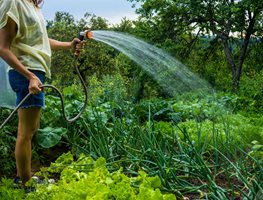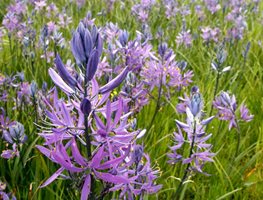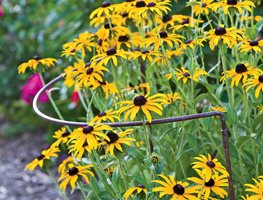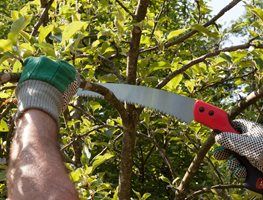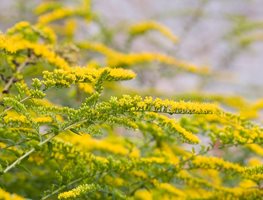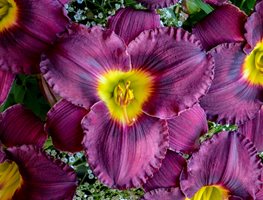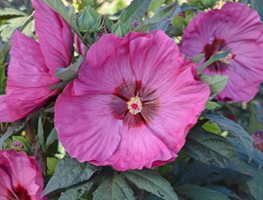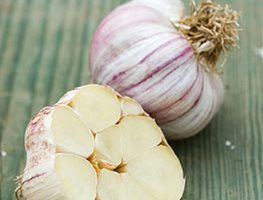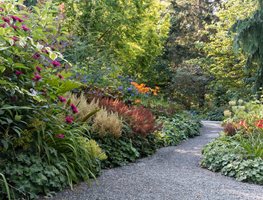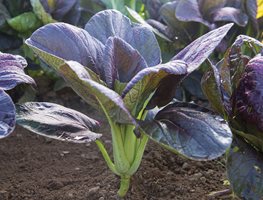10 Gardening Activities for August in the Pacific Northwest
Here are a few garden reminders, inspiring ideas, maintenance tips, and places to visit this month.
1. Keep Up the Consistent Watering
Whether you hand water or use an irrigation system, be sure you’re on top of your watering game this month. Help your plants out by keeping soil consistently moist. Each microclimate in your garden will be different, so pay close attention to areas that get lots of direct sun. Some people swear by smaller watering stakes for bushes and shrubs or tree-watering stakes to make sure plants get water to their root zone. Overall, the verdict on their effectiveness is still out, but for less than $10 each, why not install some by your prized plants? It’s like an insurance policy. There are larger tree-watering tubes available, too. If you have a container garden, you may need to water once or even twice a day in extreme heat. Be sure to water spring-flowering shrubs (e.g., azaleas, camellias, and rhododendrons). Prolonged periods of low or no water will decrease flower bud formation.
2. Plan Your Bulb Garden & Start Buying
Much like the early bird catching the worm, the early buyer catches the coveted bulbs. Bulbs have had a resurgence in popularity because they are easy to plant, don’t take much water, and it’s relatively inexpensive to buy loads of them. Get a jump on your bulb planting by designing your bulb garden now, and order your bulbs as soon as you can. Bulbs look especially great when planted in masses or large groups around the garden. The list of great bulbs choices for the Pacific Northwest is quite long but there are a few that are especially good. ‘Mount Hood’ daffodil has 4-inch pure white flowers that bloom on 18- to 20-inch stems in mid-spring; Tulipa clusiana is a species tulip native to the Middle East that comes back and blooms around April year after year; and the northwest native Camassia quamash, which was used as an herb by Native Americans, blooms in May. Visit Great Plant Picks to search for bulbs that are great for your growing zone. Start planting after Labor Day. Good bulb sellers include John Scheepers, Van Engelen, Brent and Becky’s Bulbs, and Old House Gardens.
3. Prop Up Tall Plants
A little plant forethought can go a long way in August. Many large perennials such as Joe Pye weed will get floppy if not propped up. To keep them upright, use metal plant stakes coated in plastic that can be hidden among foliage. Then tie green or brown twine around them to prop up plants. Smaller plants such as black-eyed Susans, coneflowers, cosmos, and others may need propping, too. Try Jardin Half-Round Plant Supports. These half-round supports work nicely because they are understated. Another benefit is that you can add them later in the season after plants have already matured if necessary.
4. Prune Broken Branches & Dead Growth
August is a good time to prune back any broken branches or dead growth to help prevent plant disease. Using clean pruning shears or a folding pruning saw, cut back trees and shrubs to a spot on the plant where healthy growth begins. Dispose of the plant material you’ve removed into a compost pile or green waste bin.
5. Blooming Now
Dianthus (aka 'pinks') rebloomers are giving a final bloom this month; you can also sow seeds directly now for flowers in spring.
A welcoming sight in late summer, goldenrod ('Golden Fleece' pictured) will be filling gardens with their yellow beauty that is also a great cut flower for sunshine indoors.
Add pretty much any color you’re lacking with garden phlox (even blue!). This perennial is committed and will bloom in your summer garden for years to come.
Don't miss what to do in the garden each month, make sure you're getting our weekly newsletter.
6. Clean Up and Divide Daylilies
Typically, late summer into autumn is the best time to divide daylilies in the Pacific Northwest. This gives replanted daylilies enough time to settle in before the first frost. You’ll know you need to divide plants when clumps look crowded and overgrown, have lots of brown leaves, or when you notice a decrease in flower production. Dividing daylilies every four to five years is usually sufficient. To divide the plant, dig up the clump and use a clean spade or soil knife to separate young plants with strong root systems from the old clumps. Cut back the foliage to around four to six inches and replant immediately. Water new plants well. In most areas you can also plant daylilies from spring straight through the summer and into fall. If you want to buy new daylilies, visit Proven Winners to see their selection, including Rainbow Rhythm® Nosferatu (pictured).
7. Fill in Garden Beds with Tropicals
If you have space in your garden that you want to fill fast with big beautiful foliage or flowers, turn to tropical plants. There are a number of varieties that can be used as annuals, and some that are even hardy in Pacific Northwest growing zones (down to Zone 5). A few specimen plants to try include Musa basjoo (hardy to Zone 5), which is grown for its big light-green foliage; Summerific® 'Berry Awesome' Hibiscus (pictured; hardy to Zone 4), which has huge lavender pink flowers; elephant’s ear (hardy to Zone 7), with large 2-foot-wide green, purple, or even black leaves; and canna lily (hardy to Zone 7), which has big tropical-colored flowers that come in a range of oranges, red, maroons, peaches, pinks, and yellows.
8. Order Garlic for Fall Planting
Like basil, garlic is one of those herbs that is so much better when fresh from the garden. Try growing your own garlic this season. If you want to plant it in September or October, now’s the time to order your bulbs. Burpee has a nice selection of garlic bulbs for sale. A few to try include Romanian Red, which has a robust and hot flavor, or Metechi, which has a strong, rich flavor.
9. Visit Gardens of the Pacific Northwest (in person or from home)
There are many extraordinary gardens, so we created a collection of self-guided day trips with beautiful photos to browse from home, along with insights and information to help you plan your next trip and make the most of your time in each location!
Portland Day Trip: We have some hidden treasures to share with you! Explore the Leach Botanical Garden, Crystal Springs Rhododendron Garden, and the Rogerson Clematis Garden. You know you’re in good hands because JJ De Sousa, owner of Digs Inside and Out in Portland, is your awesome guide.
Seattle Day Trip: Garden expert extraordinaire Karen Chapman (have you taken one of her online courses?) shares 3 gardens to explore, and they are truly remarkable. Bellevue Botanical Garden (pictured), the Seattle Japanese Garden, and the Bloedel Reserve are all her personal favorites.
10. Direct Sow Your Salad Garden
It’s a great time of year to sow greens such as mesclun, arugula, kale, swiss chard, spinach, and more. This is also when you’ll want to sow root vegetables and legumes. Be sure to water new plants daily until roots develop. If you have space, sow a row of greens each week for a prolonged harvest as plants mature. You can also sow radishes, onions, carrots, turnips, and peas. For something a little different, try growing bok choy for its mild, peppery flavor. You can steam or sautée it or use it in soups or stir-fries.
If you enjoyed this information, sign up for our weekly newsletter. Each week, you'll get Garden Design's best delivered right to your inbox including design tips, plant picks, great gardens, outdoor living products, and events to enjoy — along with monthly gardening checklists just for your area.
Do you know someone who would enjoy this Pacific Northwest Region gardening information? Why not share it with them?
When you purchase products through links on our site, we may receive an affiliate commission. Thank you for your support.
